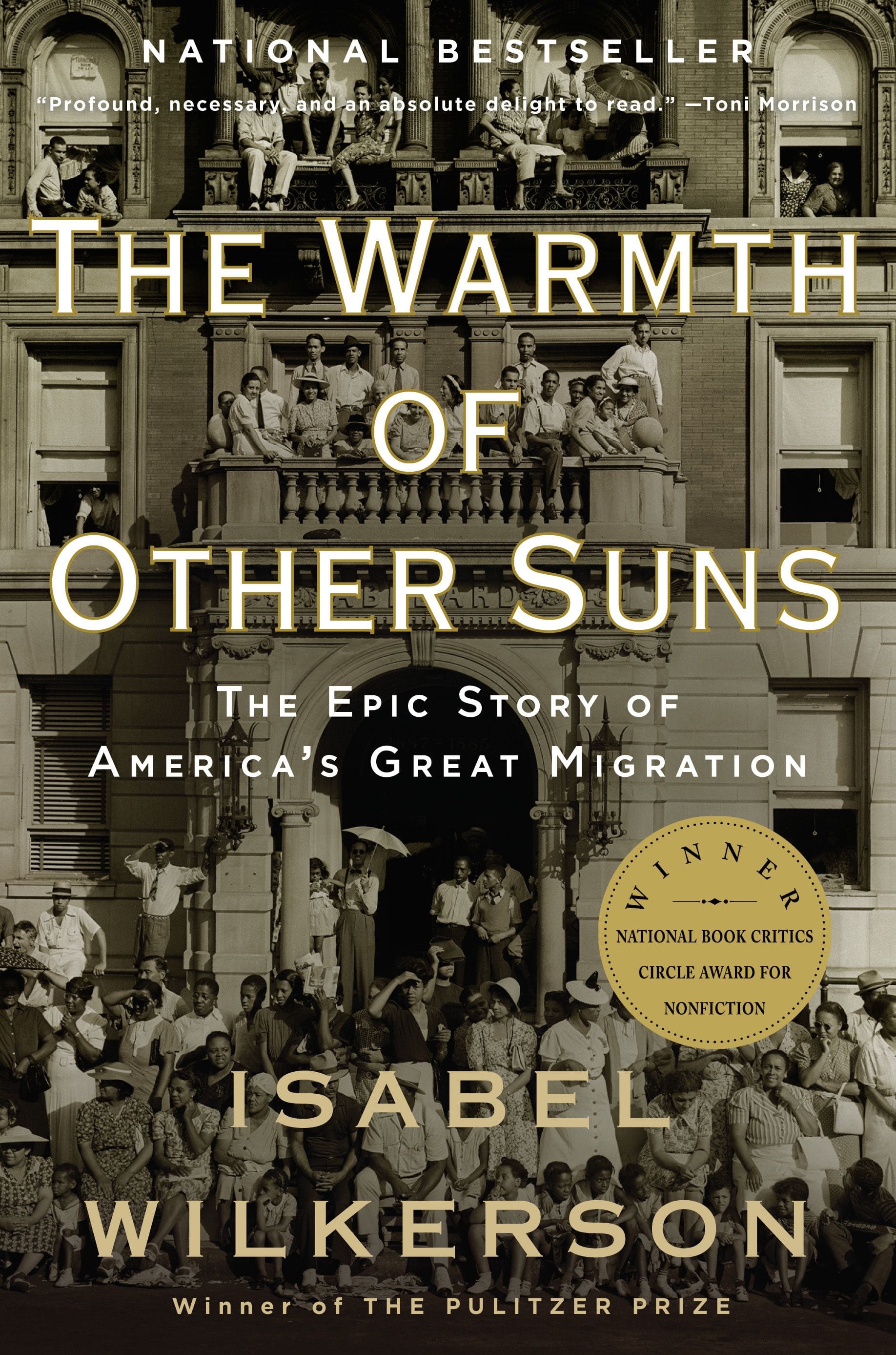
In The Warmth of Other Suns, Pulitzer Prize-winning author Isabel Wilkerson illuminates the mass migration of African Americans who fled the South in the first half of the 20th century in search of a better life. The story is powerful and heartrending, built on thousands of personal interviews and impressive research, and accompanied by three intertwined migrant narratives that provide a rich, personal connection to this epic story.
Wilkerson’s protagonists include Ida Mae Gladney, a sharecropper who left Mississippi in the late-’30s for Chicago; George Starling, who escaped persecution in ’40s Florida and ended up in Harlem; and Robert Foster, an ambitious Louisianan who headed for the promised land of ’50s California. We follow their stories from cradle to grave, share in their travels and travails, and become deeply attached to them thanks to Wilkerson’s brilliant storytelling. Their stories help us to better understand a world that seems far in the past and reminds us that the past wasn’t that long ago.
The enormity of the oppression meted out to African Americans under Jim Crow cannot be overstated. Many southern blacks toiled in virtual slavery as sharecroppers, indebted to white landowners who shamelessly cooked the books to keep their workers in bondage, with the threat of violence hanging over those who’d challenge their integrity. Lynchings and executions were carried out to punish blacks for slights, real or imagined, toward whites—entire black communities could be wiped off the map by mob violence that was not only overlooked but often abetted by law enforcement.
Wilkerson details the racial protocol of the Jim Crow South with a coolness that demonstrates the banality of their evil and emphasizes their absurdity. “In one North Carolina courthouse,” she explains, “there was a white Bible and a black Bible to swear to tell the truth on.”
Despite the great lengths Southern whites went to to separate themselves from African Americans, they paradoxically took extreme measures to prevent the objects of their scorn from fleeing north. The vast numbers who joined the migration were a cause for alarm, as black labor was a crucial element of the Southern economy. “No other,” claimed the South Carolinian newspaper Columbia State, “would work long under the same conditions.” Laws were passed to prevent Northern recruiters from soliciting blacks, and those trying to emigrate were labeled fugitives subject to arrest. In the face of such intimidation, the urge to escape only intensified.
Though plagued by racism and prejudice as virulent as in the South, the North offered greater opportunities for employment and legal protections that would at least give African Americans a fighting chance. Though Ida Mae, George, and Robert didn’t have to fear the most extreme injustices prevalent in the South, they were subject to what sociologist Gunnar Myrdal named the “Northern Paradox”, the idea that while most white Northerners were against discrimination on principle, they often practiced it in their personal affairs.
Ida Mae encountered this when she moved to a predominantly white community, and her new neighbors swiftly moved out. George spent 35 years as a baggage handler on a train without advancement or promotion opportunities. Robert cultivated a successful medical practice, only to be shamed in the twilight of his career by whites who resented his success and confidence.
Wilkerson highlights the greatest indignity of the pervasive prejudice that reigned in many places in the United States through the ’70s. The dreams and aspirations of an entire race were stymied for no good reason and to the detriment of the nation. Their hopes and desires were thwarted at every turn simply because of the color of their skin. She brings this out most effectively in her depiction of George Starling. Growing up in Florida, Starling had big ideas and even attended college for a few years before he was forced to give it up and join his father in the orange groves.
In his middle age, having been out of the South for a quarter century, George would look back on his life with regret. “He would never be the chemist or accountant he had seen himself in his mind,” writes Wilkerson, “would never work a white-collar job or any kind of job that would make use of his intellect.” He could see that things were changing for young African Americans. They would be able to pursue what was denied them. He was proud of that, but the victory was bittersweet. “The revolution had come too late for him.”
Though it succeeds in its goals of dispelling the misconceptions and distortions that have grown around the Great Migration and demonstrating the progress made by the intrepid African Americans who challenged the status quo, The Warmth of Other Suns is, at heart, a tragedy. It’s a chronicle of lives torn apart by prejudice, a nation senselessly divided by race. It’s a story vital to understanding the United States and should not be ignored.
